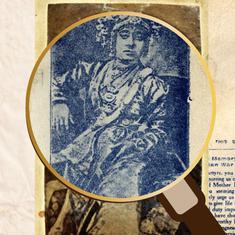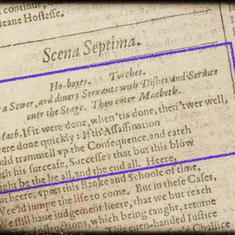The Etawah-Imdadkhani gharana of sitar has given several amazing exponents of the instrument to the world of Hindustani music. But the one who shines the brightest as a path-breaker in every way is Vilayat Khan (1927-2004). An iconic figure who has inspired scores of not just sitar players but several instrumentalists and vocalists, Khan was a master at extracting the emotional and architectural essence of even a single musical phrase, by removing it from its familiar context and approaching it in myriad ways, with constant permutations and combinations.
This is amply clear in this live concert recording that features a detailed delineation of raag Yaman for more than two hours. With this track, we move to the second of our series on instrumental renditions of raag Yaman. You can read the first part here.
The maestro begins with an aalaap, the introductory chapter to the raag unaccompanied by any percussion instrument. Listeners will note the manner in which he manipulates swaras or notes as he establishes the shadja (Sa) or the first swara/tonic of the middle octave. In what seems like an effort to coax out every fraction of each swara, he arranges the building blocks of a magnificent architectonic Yaman. He changes his focus from the shadja to the pancham (Pa), or the fifth swara of the lower octave, as he moves towards the swara in a similar meandering fashion.
The influence of vocal music on his aesthetic, more popularly known as gayaki ang (a style influenced by vocalism), is clearly heard in the superbly intoned long meends or glides that he plays over four or five swaras in a single stroke. He treats focal centres like the gandhaar (Ga) or the third swara that is the vaadi or dominant swara of Yaman in a similar manner.
Artistic pauses
After a relaxed exploration of the first section of the aalaap, Khan moves to the jod, which has a pulse added to the melodic elaboration. As he traverses through the known territories of Yaman, he pauses ever so often on a single swara to let the listeners’ minds wander and create melodic images. The pinpointed articulation of each swara demonstrates the care with which he looks at the entry and exit points of the swara. He highlights this further with dynamics that are used judiciously unlike what would have otherwise turned into a gimmick or unnecessary sentimentalism.
He concludes the aalaap with a jhala section that has a repeated percussive quality and reveals different right-hand stroke patterns without dismissing for a moment the importance of the left hand. Increasing the pace as he ascends through the chalan or movement of the raag, Khan comes to a point where he establishes a melodic and rhythmic framework as a refrain that is interjected with virtuosic small and long taans or swift melodic passages.
The attractive tonal quality of Khan’s sitar and the ease with which he handles the instrument is equally evident in the gat (instrumental composition) section. He plays a vilambit or slow gat in raag Yaman Kalyan set to Teentaal, a cycle of 16 matras or time units. He seamlessly introduces various kinds of layakari or rhythmic interplay with the basic cycle, none of which sound aggressive or overtly mathematical.
The second composition in Yaman is set to drut or fast Teentaal. After launching into a series of powerful taans, Khan changes from Yaman to a raagmala, or a string of raags. He even demonstrates vocally during this section. The rendition is brought to a close with a jhala played at great speed in Yaman.










